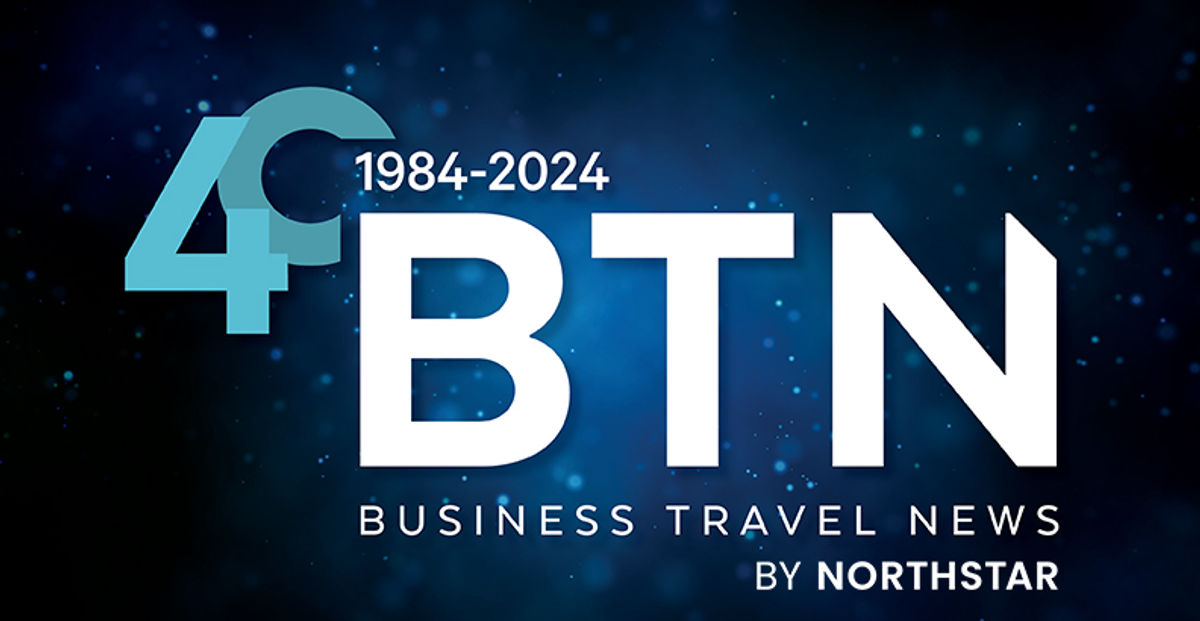CWT: Don't Count on Travel Savings in 2025
Travel prices are moderating in most markets around the globe, according to a new forecast and report from CWT and the Global Business Travel Association. But business travel buyers should not expect, necessarily, to get a pricing reprieve that...

Travel prices are moderating in most markets around the globe, according to a new forecast and report from CWT and the Global Business Travel Association. But business travel buyers should not expect, necessarily, to get a pricing reprieve that drops into the savings zone.
"Elevated business travel costs are now a reality to be factored into the cost of doing business overall," read a commentary piece in the report credited to GBTA CEO Suzanne Neufang. "Thus, buyers are already adjusting their longer-term expectations on price as a significant factor in their travel programs."
A number of factors are contributing to pricing trends. Straight-up supply and demand is one, according to the report. Supply chain issues are impacting the airline industry—the investigations into Boeing's safety commitment being a major issue in that chain's disruption, and tough financing in the hotel market is keeping developers in wait-and-see mode.
On the demand side, however, business travel buyers will appreciate the cooldown in leisure travel demand and may now be able to get a word in edgewise with prospective air, hotel and car rental partners looking to fill some gaps emerging in vacationer traffic with the reliable, repeat volume promised by business travel. And, of course, there's overall inflation, which looks like more of a factor in some regions than others going into 2025.
Still, in the cocktail of it all, year-over-year savings isn't a given. Neufang called travel "more of a supplier's market" for the foreseeable future (2025 and 2026), and one in which buyers will need to dig deep into their program strategies in order to make a dent on the cost side.
Pricing in Brief
Airfares in North America are projected to show moderate year-over-year growth of 3.5 percent in 2024 and slow to 0.5 percent in 2025, according to the CWT report. In Asia-Pacific, 2024 will ultimately see 2.3 percent growth and then downshift to 1.6 percent in 2025. Europe, Middle East and Africa had the highest average ticket price in 2023, but pricing growth moderated to 1.5 percent this year and CWT projects a 1.4 percent increase in airfares for this region in 2025. Airfare growth in Latin America, in contrast to all other global regions, actually ramped up in 2024, with a rise of 2.6 percent projected for this year compared to a 2.2 percent rise last year. 2025 will see more muted growth at only 1.6 percent, according to the forecast
CWT projects average daily hotel rates in North America will rise to $184 in 2024 and to $187 in 2025. This represents year-over-year growth rates of 2.8 percent and 2.2 percent respectively. This will be uneven with upscale properties facing less downward pressure than the midscale and economy tiers. Meetings and group travel will continue to compete with transient business travel for rooms and with each other for event space.
Asia-Pacific will see year-over-year growth of 3.8 percent on average to $136 in 2024, and 2.2 percent to $139 in 2025, with both group and transient business travel rebounding. EMEA in 2024 and 2025 is looking at more moderate 1.9 percent growth for both years; a cost-of-living crisis is curbing some leisure demand. Latin America hotel rates are growing much faster than any other region, but also on a lower base of $93 in 2023. They are expected to climb 9.7 percent in 2024 and another 7.8 percent in 2025, with an influx of labor relocation from higher-cost markets.
Ground transportation was the only category that CWT appeared to view as an opportunity for travel buyers in 2025, with significantly cooling leisure demand and recent selloffs of electric vehicle fleets signaling some strategy issues for this sector.
In North America, car rental rates, according to CWT, are forecast to rise 1.5 percent year over year in 2024 and just 1.3 percent in 2025. In EMEA the growth rate is expected to ease to a gain of just 1.7 percent this year and 0.9 percent next, with the appetite for public transit becoming more prominent. LATAM's inflation issues are driving up car rental rates more than in other regions. On a base of $35 per day, travel buyers will likely see an 11 percent increase for 2024 and another 7.9 percent in 2025, but that would still end lower than the daily rate in Europe and North America, and possibly Asia as well, where ground transportation prices are actually projected to drop about 6.8 percent in 2024 and another 3.4 percent in 2025 to end around $46 per day.
Asia-Pacific ground transportation was the only travel purchasing category and the only region where there was any retrenchment in pricing projected for 2025.
What to Do
While the "pricing environment is stabilizing," said CWT global head of consulting services Richard Johnson, travel buyers will need to dig deep into their partnership strategies to drive savings. Airlines are perhaps the least likely of all categories to budge on pricing.
Labor and fuel costs have gone up and geopolitical issues in Ukraine, Russia and the Middle East are forcing them to fly longer routes to avoid airspace. These are hard costs they can't get around. That said, some airlines are driving stronger profits than they have in decades, and they aren't looking to reduce those margins. They are controlling capacity—and supply chain issues, anyway, are contributing to that. In Europe, renewable aviation fuel surcharges are adding to the airfare scenario.
Asked about the role of New Distribution Capability in the pricing scenario, Johnson said it adds more agility with continuous pricing options that are not supported in EDIFACT environments. Buyers whose companies have implemented NDC content at scale, have told BTN of relative savings compared to what "would have been spent" in EDIFACT channels. As NDC develops, Johnson said, there may be opportunities for targeted discussions around sustainability features or certain in-flight costs that start to be negotiated. As retailing strategies mature, however, NDC-driven transactions will likely present more ancillary offers to business travelers, and that will need to be monitored in both policy, automation tools and expense reporting.
Hotel rooms are looking pricey as well, but with a slight cooldown of leisure travel, hoteliers may be looking more openly at more reliable corporate travel, but only to a point. Buyers will need to have strong data to engage in rate discussions, and hoteliers are engaging strong yield-management strategies to ensure their margins. Plus, they are willing to consider holding the line on rate even if it means lower occupancy—and that's a change since prior to the pandemic.
The report authors recommend looking to partner with broader-brand portfolios and consider "trading down" to other brands if pricing seems out of reach. Johnson clarified that recommendation, however, advising buyers to tread carefully when it comes to downgrading the traveler experience wholesale.
"Our customers … take a more kind of holistic approach and say, what's the best fit for our program based on the things that we need," he said, suggesting that buyers could consider consolidating with fewer brands, then "segmenting the traveler community to access certain brands according to job type, seniority or frequency of travel.
What the report did say affirmatively is that if pricing seems really high, buyers should not hesitate to address it. Leveraging your strongest evidence-based volume and share shift capabilities is the best path to success.
Ground transportation, with its lower projected rate increases, looks like it could offer the most opportunities for travel buyers. Fleets have been brought back up to size and car rental companies have realized some efficiencies since the pandemic. Some, however, are reeling a bit from overinvesting in electric vehicles. If a corporate program is looking to go that direction, it could be a good time to do so—but make sure the charging infrastructure is robust in target driving geographies. Finding real rate relief in the ground transport market may require a more drastic move, however; report authors suggested changing suppliers might be the way to draw out the most competitive rates.
Finding Value When the Bottom Line Isn't the Bottom Line
The CWT-GBTA report recommended that buyers be "ruthless and bold" in their approach to cost, but also to "go for the long-term approach, and reenergize supplier relationships so you can mitigate price increases and extract value." Still, in this suppliers' market, that may not yield the bottom-line results as in some years past.
The alternatives are to try to define the value of business travel across the organization, according to CWT. BTN has seen travel buyers effectively collaborate with facilities management for remote work enablement strategies and work with sustainability teams. CWT suggested creating new key performance indicators for travel that show an impact on these strategic efforts—potentially, on employee retention rates or satisfaction among younger employees, who have shown as a whole a zeal for work travel as a way to enrich their lives.
Globalizing a program to extract pricing considerations from new purchasing scales was another opportunity identified in the report, and, finally, to keep an eye out for change. Suppliers are always looking for that competitive move. So, when one supplier breaks the phalanx on pricing to make a move for market share, buyers need to be ready for that opportunity.

 Tekef
Tekef 
































